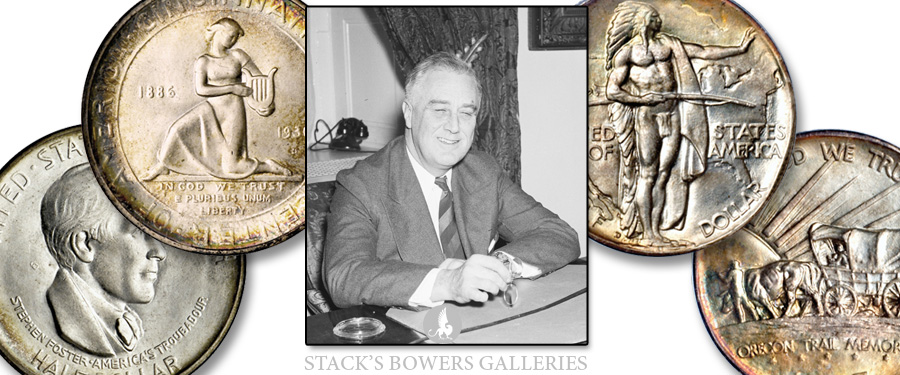
By the late 1930s, it had become fairly clear that commemorative coins were something of a racket. Several commemorative silver half dollar series had been running for years, one of which, the Oregon Trail commemorative half dollar, had been in production since the 1920s. Additionally numerous shorter-lived (or single-date) issues commemorated truly obscure, sometimes hard-to-define people, institutions, and events. The Cincinnati Music Center half dollar commemorated what former Coin World editor Bill Gibbs aptly described in the magazine’s August 2019 cover feature as “a nonexistent event run by a nonexistent committee recognizing a supposed national contribution unsupported by history… [which] depicted an individual whose connection to the city was nebulous at best.” The self-dealing on the part of distributing organizations put a bad taste in the mouths of legislators.
A series of Congressional hearings on the topic at mid-decade threw light on some of the more egregious abuses. Legislative efforts to curb commemorative coin programs began to materialize in 1936, the year that saw the largest number of commemorative coins issued, among them the above-mentioned Cincinnati Music Center half dollar. Only a handful of commemorative programs were approved after 1936, but several series remained in production, including the above-mentioned Oregon Trail commemoratives. To officially stem the tide, Congress passed a law suspending the production of all commemorative coins authorized before March 1, 1939, and approved just three commemorative issues thereafter.
For readers interested in learning more about classic commemorative coins and the circumstances behind their suspension, the above-mentioned August 2019 cover feature of Coin World is very helpful. Swiatek and Breen’s Encyclopedia of United States Silver & Gold Commemorative Coins, 1892-1954 is still regarded as the standard reference on classic commemoratives.





